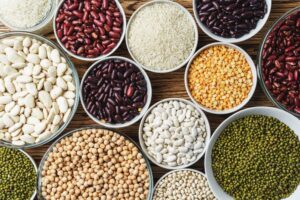Introduction
Grains are integral to human survival, forming the foundation of diets and economies across the globe. As the population grows and environmental challenges intensify, grains are at the forefront of addressing food security, health, and sustainability. This blog explores how the grain industry is evolving to meet these demands.
Grains as a Nutritional Cornerstone
Grains provide essential nutrients that fuel the body. Whole grains, such as farro, oats, and wild rice, are high in dietary fiber, antioxidants, and healthy fats. These nutrients support heart health, improve digestion, and help maintain steady energy levels throughout the day.
The versatility of grains allows them to fit seamlessly into various cuisines. From hearty soups and casseroles to light salads and desserts, grains are a culinary favorite. Their affordability and long shelf life make them accessible to people worldwide, ensuring they remain a dietary staple.
Economic and Social Impact of Grains
The grain industry supports millions of livelihoods, from small-scale farmers to large-scale distributors. Grain crops are among the most traded commodities globally, contributing significantly to national economies. Regions that specialize in grain production often see enhanced rural development and poverty alleviation.
By investing in technology and infrastructure, governments and organizations can further strengthen the grain industry’s role in economic empowerment. Mechanization, better storage facilities, and efficient supply chains reduce waste and improve productivity, ensuring grains reach those who need them most.
Innovations in Sustainable Grain Farming
Sustainability is a pressing issue in grain production. Unsustainable farming practices can deplete soil nutrients and harm ecosystems. However, modern solutions such as regenerative agriculture, precision farming, and organic methods are transforming the way grains are grown.
These techniques prioritize soil health, water conservation, and biodiversity, creating a balance between productivity and environmental responsibility. Businesses that source sustainably grown grains are not only contributing to a healthier planet but also meeting consumer demands for ethical products.
Future Trends in Grain Consumption
Consumer preferences are shifting toward health-conscious and environmentally friendly products. Ancient grains, gluten-free options, and fortified grain products are at the forefront of these trends. Innovations like plant-based proteins derived from grains are also gaining traction, expanding the market for grain-based foods.
To capitalize on these trends, businesses must focus on transparency, quality, and education. Informing consumers about the benefits of grains and how they align with sustainable living builds trust and loyalty, driving long-term success.
Conclusion
Grains are more than a staple—they are a symbol of resilience and innovation. By embracing sustainability and meeting evolving consumer demands, the grain industry can secure its place in feeding future generations. Whether as a farmer, business owner, or consumer, your choices in grains have the power to shape a better world.





